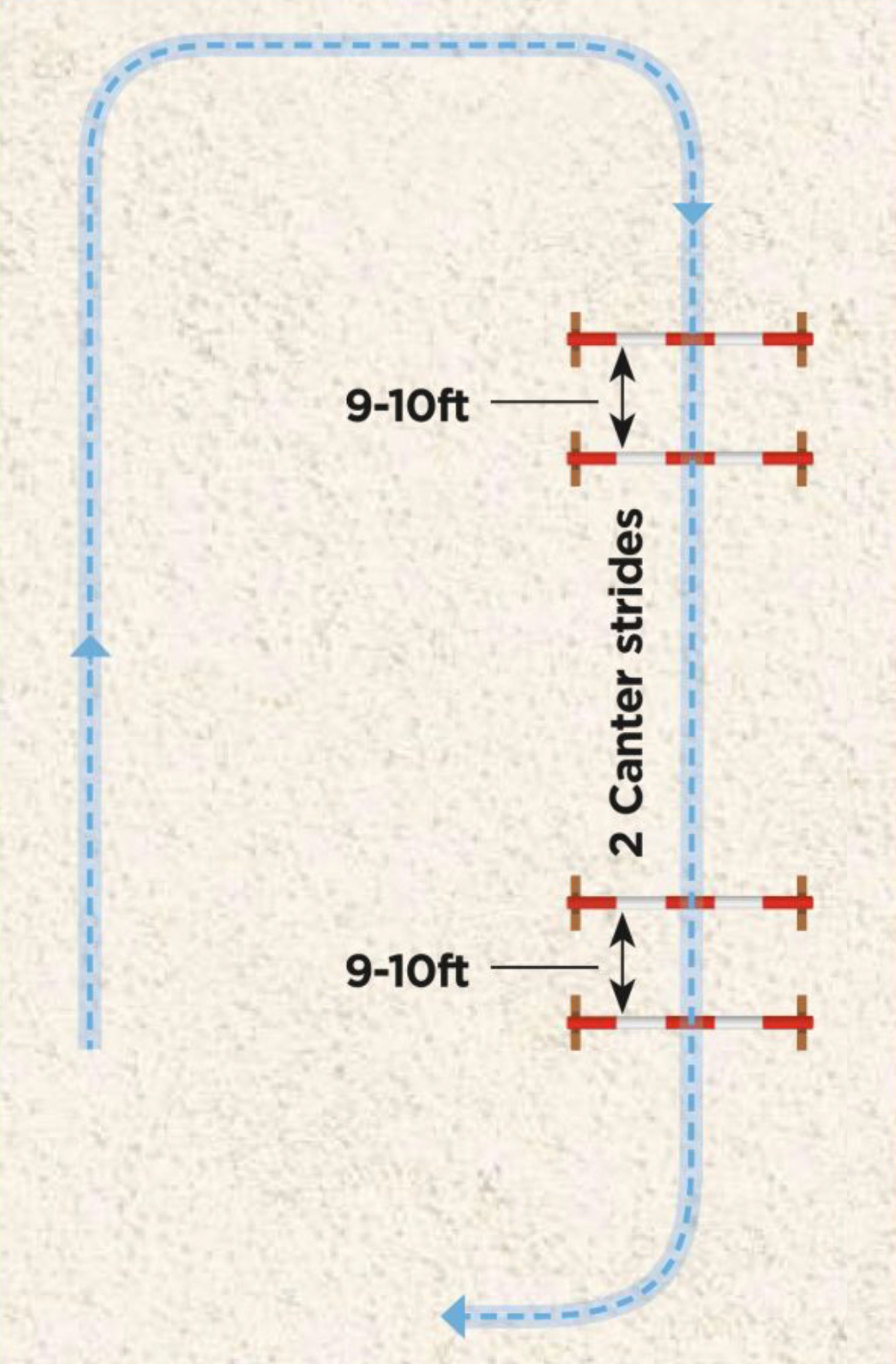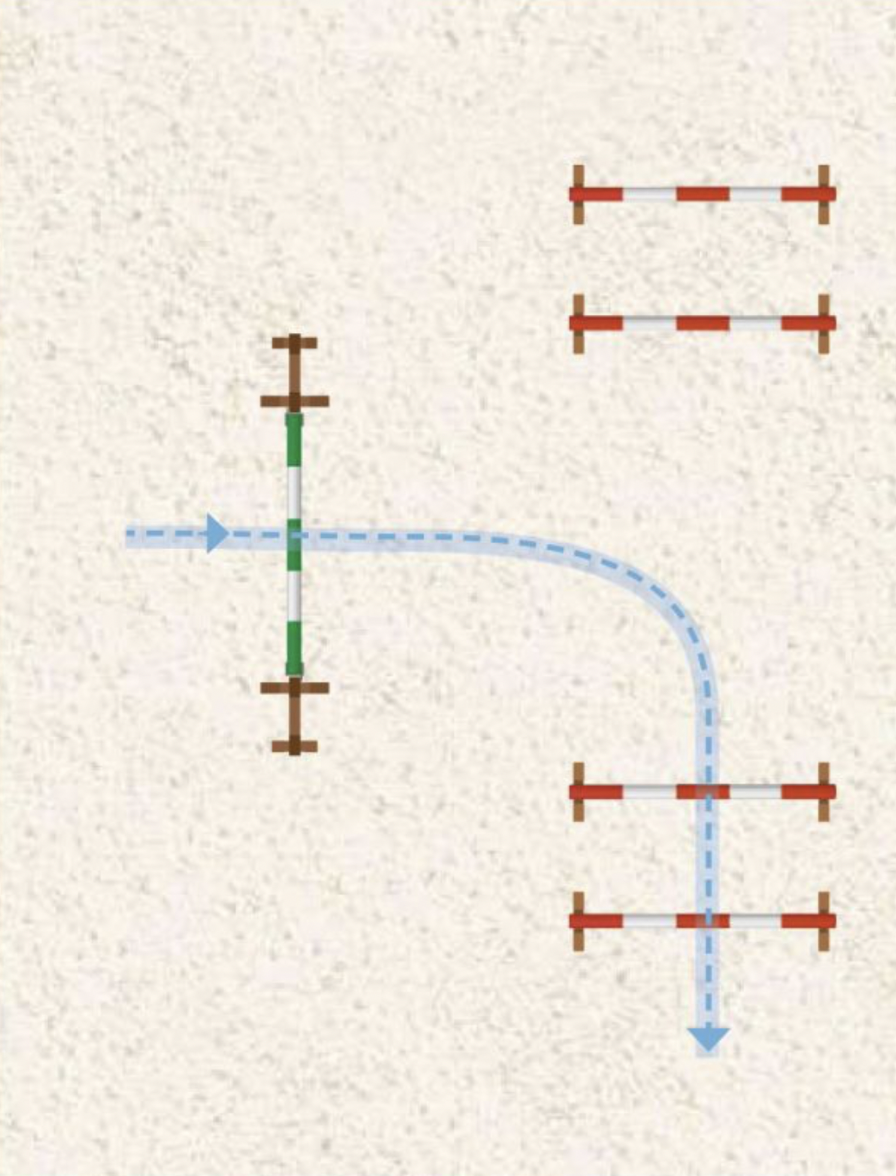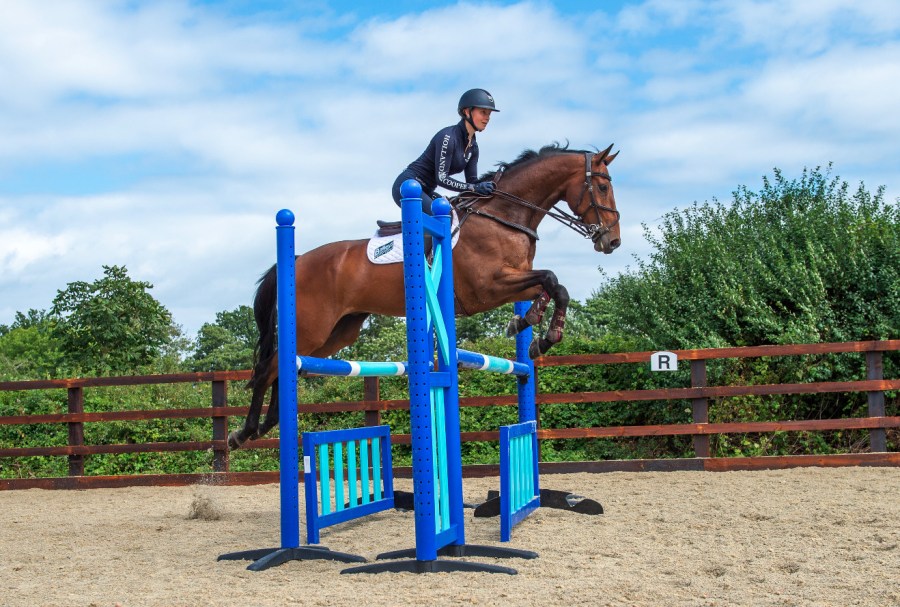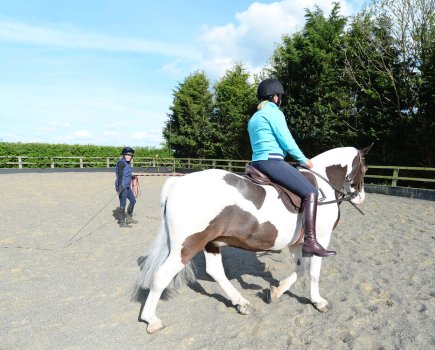If you struggle with how best to prepare for a showjumping, arena eventing or cross-country competition, or if you get distracted by battling your nerves, don’t worry as eventer and trainer Caroline Moore has the perfect schooling solution.
“I use these exercises with all of my clients. They provide a great workout to get horses thinking for themselves,” says Caroline. “Horses that rush will particularly benefit from the second exercise, as it teaches them not to rely on their canter.”
Caroline shares four exercises to have you and your horse ready to compete – the first two are featured here, and the final two are available in part two here.
Ensure you and your horse warm up properly before beginning the exercises.
Exercise 1: Pairs of cavaletti

Exercise 1
This exercise is great for getting your horse to think about their leg placement and paces – essential for jumping to reduce the risk of them knocking down fences.
Set it up: Arrange two pairs of cavaletti or raised poles (just high enough to not be resting on the surface) along the three-quarter line of the arena, with two canter strides between each pair.
How to ride it:
- Start on whichever rein you prefer. Pick up trot and go large around the arena, getting your horse active and ready for polework before turning up the three-quarter line to approach the first pair of cavaletti.
- Keep straight. After trotting over the first pair, aim for the second.
- Concentrate on the rhythm of your horse’s strides. Do they feel active? Would you feel confident approaching a jump?
- Now change the rein and approach the cavaletti from the other direction.
- Once you’ve ridden the exercise on both reins in trot, repeat in canter.
- You should start to feel your horse lifting their legs beneath them more – you want to feel the energy gathering beneath you like a coiled spring, rather than feeling them rushing forwards.
- Repeat the exercise on each rein if you feel they’re still not engaging their legs and they keep kicking the poles.
Exercise 2: Trot to upright

Exercise 2
Set it up: This exercise uses the same cavaletti as in exercise one, but with the addition of a small upright fence in the centre of the school facing the long side.
After jumping the upright from trot, it’s up to you which pair of cavaletti you want to aim for, but make sure you’re clear with your aids – your horse may not be expecting to turn towards them after negotiating the upright.
Approaching the upright in trot makes your horse use themselves rather than relying on the momentum of their canter to get them over the jump.
“Don’t let them springboard to it; you’re not asking for a sudden lurch over the jump. The movement should feel controlled and smooth,” notes Caroline. “If your horse counter-canters, don’t worry about correcting it – use it.”
How to ride it:
- Turn off the long side of the arena and approach the upright in medium trot.
- Sit quietly and don’t anticipate. Your horse may go into canter on landing.
- In trot or canter – whichever your horse has landed in – angle to approach one of the pairs of cavaletti.
- After going over the pair of cavaletti go large, then approach the upright again. This time on landing, aim for the other pair of cavaletti.
- As you repeat it, the whole sequence should start to feel smoother. Your horse will begin to engage their body, using their core strength rather than momentum to propel themselves over the obstacles.
- This will also help to make them more aware of their body and leg placement, reducing the risk of penalty points on competition day.
The next step: If you’d like to take this exercise up a notch, make the upright into a small oxer. Be mindful that your horse is confident with the height you’re negotiating before you ask for more.
To continue training, exercises 3 and 4 are available in part two.
Meet the expert: Eventer Caroline Moore has produced and ridden horses up to 5 level, competing at Badminton and Burghley.
Check out our subscription offer









